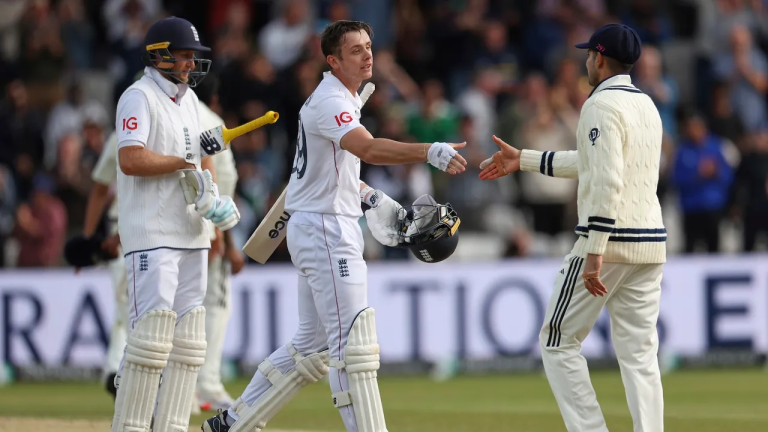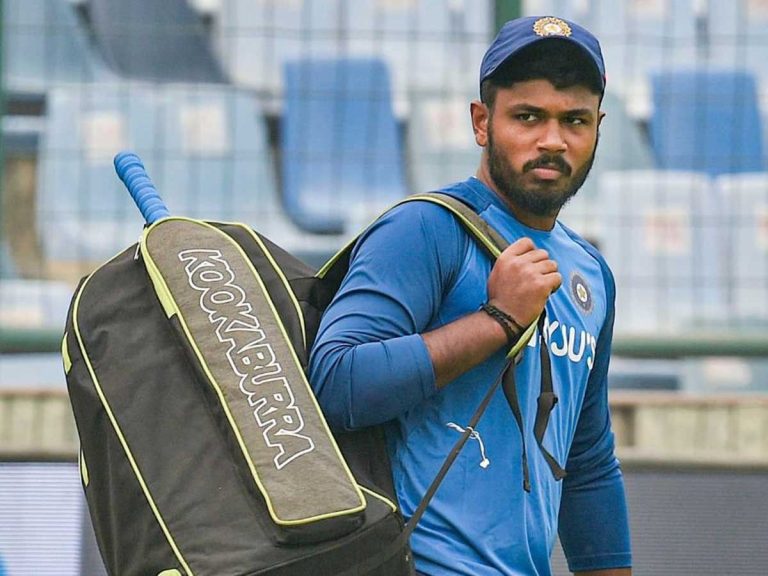
The opening day of the 2025 World Test Championship final at Lord’s delivered exactly what cricket purists hoped for – a compelling battle between bat and ball that saw 14 wickets tumble in just 78.4 overs. While Australia ended the day in a marginally stronger position, both teams demonstrated why they earned their place in this prestigious final through contrasting yet equally effective approaches.
South Africa’s Bowling Brilliance: Rabada’s Five-Star Performance
South Africa’s decision to field first proved tactically astute, with Kagiso Rabada spearheading a devastating bowling attack that dismantled Australia’s batting lineup. Rabada’s exceptional figures of 5-51 highlighted the Proteas’ disciplined approach to exploiting the Lord’s conditions. His ability to extract movement and maintain consistent pressure exemplified world-class fast bowling at its finest.
The South African pace attack’s success stemmed from their relentless accuracy and intelligent use of the seaming conditions. By targeting the stumps and maintaining tight lines, they forced Australian batsmen into defensive positions before striking with deliveries that demanded respect. This methodical approach reflected South Africa’s evolution into a more patient, tactically sophisticated bowling unit.
However, the bowling performance also revealed areas of concern. Despite Rabada’s heroics, the supporting cast couldn’t maintain the same intensity throughout all sessions. The inability to dismiss Australia for a significantly lower total – given their dominant periods – suggests missed opportunities that could prove costly in a final where every run matters.
Australia’s Resilient Response: Webster and Smith Show Character
Australia’s innings of 212 represented a tale of two halves. The early collapse exposed familiar vulnerabilities against quality pace bowling, but the recovery through Steve Smith (66) and particularly Beau Webster (72) demonstrated the mental fortitude that has defined this Australian team.
Webster’s maiden Test fifty in a World Test Championship final showcased remarkable composure for a relative newcomer to international cricket. His ability to counterattack when the situation demanded aggression, combined with traditional defensive techniques when patience was required, provided Australia with crucial momentum shifts. This innings not only added vital runs but also disrupted South Africa’s rhythm at crucial junctures.
Smith’s contribution, while more subdued than his usual standards, proved invaluable in the context of the match situation. His partnership with Webster transformed Australia from a precarious position into one where they could post a competitive total. The veteran’s experience in high-pressure situations was evident in his shot selection and ability to rotate strike during difficult phases.
The Australian batting performance highlighted both their depth and their ongoing challenges against high-quality pace bowling. While the lower-middle order showed admirable resilience, the top-order struggles reinforced questions about their ability to handle seaming conditions against world-class attacks.
Australia’s Bowling Counterattack: Starc’s Immediate Impact
Australia’s response with the ball demonstrated why they remain the defending champions. Mitchell Starc’s early strikes, claiming both South African openers for minimal scores, immediately shifted momentum back toward the visitors. His ability to generate pace and movement in the fading light created exactly the pressure needed to capitalize on their batting efforts.
The Australian pace attack’s strategy of targeting the stumps and maintaining aggressive fields paid immediate dividends. Starc’s dismissal of Aiden Markram for a duck in the first over, followed by Ryan Rickelton’s edge to the slips, exemplified clinical fast bowling under pressure. These early wickets transformed what could have been a comfortable chase into a survival battle for South Africa.
Pat Cummins’ leadership with the ball complemented Starc’s aggression perfectly. His tactical acumen in rotating bowlers and maintaining pressure from both ends kept South Africa’s batsmen constantly under threat. The captain’s figures of 1-14 reflected not just personal success but intelligent field placements and strategic thinking.
South Africa’s Batting Concerns: Early Collapse Raises Questions
South Africa’s stumble to 43-4 by stumps exposed critical weaknesses in their batting approach against quality pace bowling. The loss of both openers cheaply suggested inadequate preparation for the intensity of an Australian pace attack motivated by defending their championship.
The early dismissals revealed technical deficiencies and perhaps mental pressure that comes with playing in a first World Test Championship final. Markram’s failure to score and Rickelton’s tentative approach highlighted the difference between domestic success and performing under the intense scrutiny of cricket’s biggest stage.
However, the unbeaten partnership between David Bedingham (8*) and captain Temba Bavuma (3*) offered hope for the remainder of their innings. Both batsmen showed greater application in the final overs, suggesting that survival rather than aggression might be the key to South Africa’s recovery on Day 2.
Tactical Analysis: Conditions and Decision-Making
The Lord’s pitch offered assistance to bowlers throughout the day, validating South Africa’s decision to field first. The surface provided enough seam movement and bounce to reward good bowling while still offering opportunities for batsmen willing to apply themselves. This balance created the compelling cricket that made Day 1 so engaging for spectators.
Both teams’ tactical approaches reflected their understanding of these conditions. South Africa’s decision to omit Marco Jansen for batting depth, bringing in Wiaan Mulder at number three, demonstrated their awareness of the challenge posed by Australia’s pace attack. Similarly, Australia’s choice to open with Marnus Labuschagne for the first time in Tests showed their willingness to adapt their approach for specific conditions.
The field placements and bowling changes throughout the day revealed both teams’ tactical sophistication. South Africa’s use of slip cordons and aggressive fields during their bowling innings contrasted with Australia’s more varied approach, adapting their strategy as the day progressed and conditions changed.
Looking Ahead: Day 2 Implications and Predictions
Australia’s position of strength at stumps – leading by 169 runs with South Africa four wickets down – provides them with multiple pathways to victory. However, cricket’s unpredictable nature, particularly in finals, means the match remains far from decided. South Africa’s ability to build partnerships in their remaining innings will determine whether they can make this match competitive.
The weather forecast and pitch conditions will play crucial roles in shaping Day 2’s proceedings. If the surface continues to offer assistance to bowlers, South Africa’s batting lineup faces a severe test of technique and temperament. Conversely, any flattening of the pitch could provide opportunities for their middle-order batsmen to demonstrate their class.
Australia’s bowling strategy on Day 2 will focus on maintaining pressure while managing workloads across what could be a long campaign. Their ability to dismiss South Africa’s remaining batsmen quickly while preserving energy for their second innings could prove decisive in determining the championship outcome.
Conclusion: A Day of High-Quality Cricket
Day 1 of the 2025 World Test Championship final delivered everything that makes Test cricket compelling – skillful bowling, resilient batting, tactical battles, and momentum shifts that kept spectators engaged throughout. While Australia holds the advantage, South Africa’s fighting spirit and the unpredictable nature of cricket ensure that this final remains wide open.
The performances of key players like Rabada, Webster, Smith, and Starc highlighted the individual excellence that defines championship cricket, while the tactical battles between captains and coaching staff demonstrated the strategic depth that separates elite teams from merely good ones. As the match progresses, these foundations laid on Day 1 will likely determine which team lifts the World Test Championship trophy.






